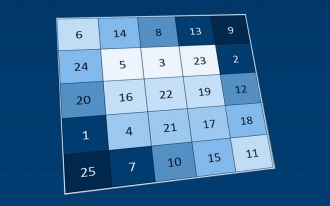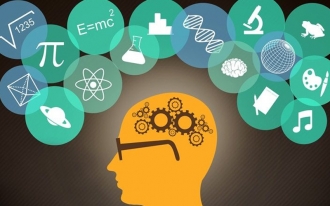- BRAINTRAIN |
- Blog |
- Attention |
- A Look at Attention After 150 Years of Study

Bogdan Moroz 13.03.2020 1873 Comments
The term attention refers to the direction of human perception toward a physical object or event to gather information.
When discussing the degree of attention, it typically refers to the clarity and completeness of that information.
These concepts evolved over years, with ongoing efforts to refine and explore the intricacies of brain processes. Attention has been studied for over 150 years, yielding fascinating insights that enhance our understanding of its mechanisms and the potential for attention training.
Insights from neuropsychologists and scientists offer a broader perspective on these questions, shedding light on this seemingly simple yet understudied aspect of human activity.
Types of Attention
Attention is classified based on two main criteria, the most common being the degree of control over the concentration process—in other words, how much you can influence your focus.
Controlled (Voluntary) Attention
The name suggests that this type of concentration requires deliberate, conscious effort. A person seeks specific information about an object or event and directs their attention to it. Without this intent, the object might go unnoticed. This includes studying, acquiring new skills, searching for objects, or focusing on specific tasks.
Uncontrolled (Involuntary) Attention
The opposite of voluntary attention, this arises unintentionally, often due to an object’s standout features. For example, you might notice a loud person at a restaurant table, a rare car model with unusual shapes, or an odd sculpture without planning to.
There’s also an intermediate form of attention, involuntary but developed through prolonged voluntary training. We’ve covered this classification in detail in our article “How to Be Attentive”.
Now, let’s explore a less-known classification based on the object of attention.
Sensory (Perceptual) Attention
This is always directed at external objects with tangible characteristics, such as appearance, size, taste, smell, or sound.
Intellectual Attention
This focuses inward, on one’s thoughts. The gaze may fixate on a physical object or wander, but the primary mental processes engage with an internal image.
Factors Affecting Attentiveness
It’s well-known that attentiveness depends not only on a person’s traits but also on the presence, strength, and impact of distractions. Understanding these dynamics allows for effective workflow planning, minimizing distractions, and boosting productivity.
Multitasking
We detailed multitasking’s impact on productivity in our article “Multitasking: A Complex Path to Simple Solutions.” In short, the more tasks handled simultaneously, the worse the results. Regardless of one’s ability to switch between tasks, maximum effectiveness comes from focusing on a single task.
Time and Direction
Prolonged focus on one task can shift attention’s direction. For instance, if a student spends too long on a single problem, their chances of solving it drop as the brain seeks more engaging stimuli. A better approach is to limit time on a task, take a break if incomplete, and return with improved focus.
The Concept of “Poor Attention”
This term doesn’t pinpoint specific concentration issues. “Good attention” is conventionally defined as an optimal range of task-switching ability. Any deviation—too slow or too fast—is labeled poor attention.
Examples:
- A person engrossed in calculations or reading news on a tablet may not respond to your conversation due to slow task-switching. From your perspective, they have poor attention, but for their initial task, they’re highly focused, ignoring distractions.
- Conversely, someone with rapid task-switching might struggle to focus on your detailed conversation, distracted by passersby or a book’s title. Despite hyperactive attention, this is considered poor due to lack of sustained focus.
Eye Movement Tracking
A popular topic often mistaken as a new breakthrough. In reality, such studies have been conducted for over 60 years, predating smart cameras or laser positioning.
Early Studies
Initially, researchers attached suction cups and mirror systems to the eyeball, capturing movements with high-speed film cameras. Scientists spent months analyzing photos to determine gaze direction.
Heatmaps of Gaze
Modern technology has simplified this process, but these metrics excite advertisers more than scientists. Gaze direction doesn’t always indicate focus, especially with intellectual attention. Heatmaps are a trendy advertising tool, showcasing the effectiveness of brochures or web designs.
Absence of Defined Brain Zones for Attention
It’s no secret that specific mental processes occur in specialized brain regions, identified via equipment measuring electromagnetic activity. But which brain region handles attention?
No Clear Zones
Years of research show no consistent pattern in specific brain structures during attention tasks. No distinct regions solely responsible for attention have been identified, leading some scientists to question whether attention is a distinct process.
Three-System Theory
The most popular explanation suggests attention involves three systems sharing tasks:
- Alertness. Managed by the subcortex, this is a state of readiness for instant attention switching and retention.
- Positioning. Centered in the right parietal cortex, this process identifies the direction of an object or event for focus.
- Conflict Resolution. Involving both hemispheres’ cortex, this regulates inter-hemispheric conflicts. An example is reading color names written in conflicting colors, which is challenging as the brain processes both the seen color and the read name.
Neurotransmitters and Genomic Analysis of Attention
Neurotransmitters are biologically active substances regulating nervous system functions. Each triggers specific brain processes.
Regulators of Biochemical Processes
For attention, we’ll examine three key neurotransmitters corresponding to the three-system theory:
- Norepinephrine. Handles alertness.
- Acetylcholine. Primary for positioning.
- Dopamine. Manages inter-hemispheric conflict resolution.
Analyzing Causes of Attention Deficits
With this knowledge, identifying attention issues becomes straightforward by analyzing neurotransmitter presence and concentration. This allows scientists to distinguish true attention disorders (hyper- or hypo-function) from mere lack of training.
Understanding root causes enables targeted interventions, such as proper attention training or reducing negative factors, optimizing workflows for individuals. This boosts productivity, enhances work efficiency, and reduces errors.
Despite 150 years of study, attention’s complexity remains partly elusive. When theory falls short, practical results from targeted exercises, distraction elimination, clear planning, and time limits demonstrate positive impacts.




